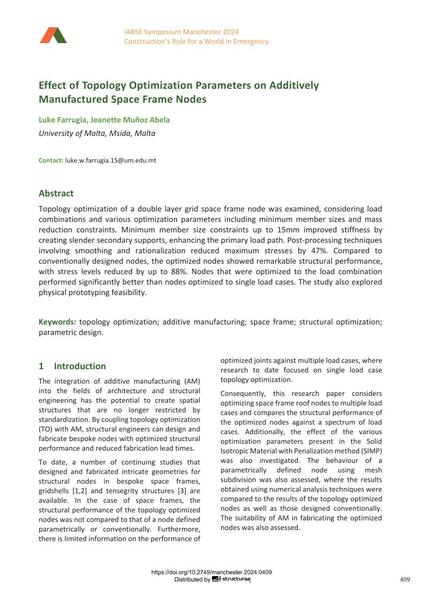Effect of Topology Optimization Parameters on Additively Manufactured Space Frame Nodes

|
|
|||||||||||
Détails bibliographiques
| Auteur(s): |
Luke Farrugia
(University of Malta, Msida, Malta)
Jeanette Muñoz Abela (University of Malta, Msida, Malta) |
||||
|---|---|---|---|---|---|
| Médium: | papier de conférence | ||||
| Langue(s): | anglais | ||||
| Conférence: | IABSE Symposium: Construction’s Role for a World in Emergency, Manchester, United Kingdom, 10-14 April 2024 | ||||
| Publié dans: | IABSE Symposium Manchester 2024 | ||||
|
|||||
| Page(s): | 409-418 | ||||
| Nombre total de pages (du PDF): | 10 | ||||
| DOI: | 10.2749/manchester.2024.0409 | ||||
| Abstrait: |
Topology optimization of a double layer grid space frame node was examined, considering load combinations and various optimization parameters including minimum member sizes and mass reduction constraints. Minimum member size constraints up to 15mm improved stiffness by creating slender secondary supports, enhancing the primary load path. Post‐processing techniques involving smoothing and rationalization reduced maximum stresses by 47%. Compared to conventionally designed nodes, the optimized nodes showed remarkable structural performance, with stress levels reduced by up to 88%. Nodes that were optimized to the load combination performed significantly better than nodes optimized to single load cases. The study also explored physical prototyping feasibility. |
||||
